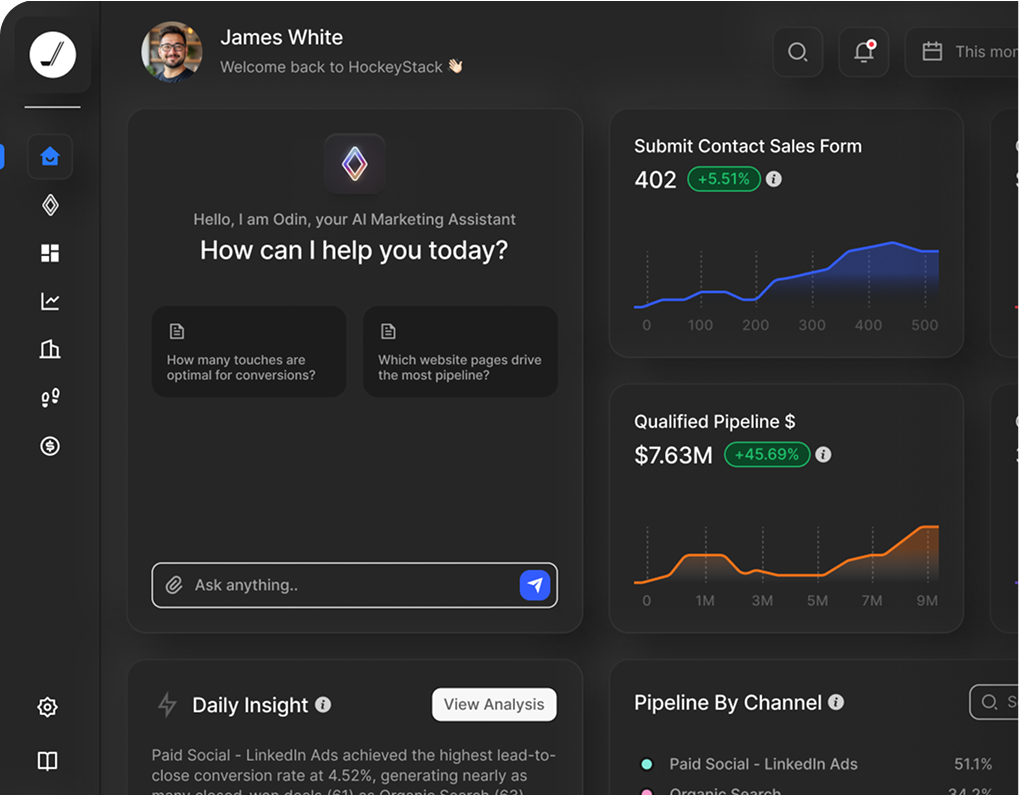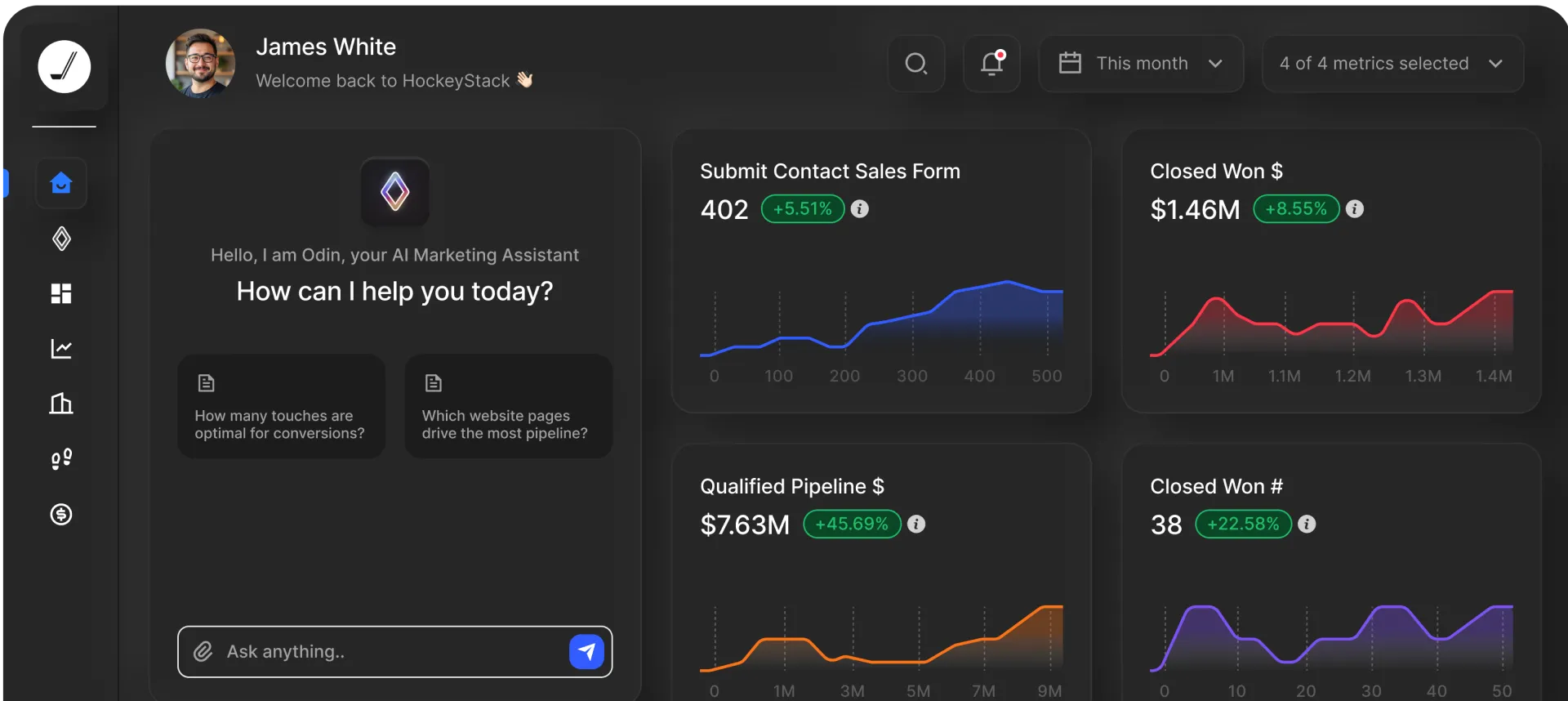Why Cross-Functional Collaboration is Essential for Data Analysis

Why Cross-Functional Collaboration is Essential for Data Analysis

You may hear people praising collaboration across departments, but what does that really mean?
Cross-functional collaboration is the process by which individuals from different parts of an organization with different areas of expertise come together to achieve a common goal. This collaboration can be organic or project-based.
Cross-functional collaboration allows you to form a high-performance team with the expertise you need to achieve the best possible results, including improved communication and customer service, and increased sales. That's why cross-departmental collaboration is a very important approach for continuous improvement.

Cross-functional collaboration can help answer a variety of questions such as “what can you sell?”, “what is the product supposed to do?” and “what should it look like?” and make sure that everyone is on the same page to reduce the risk of inconsistencies due to information leaks.
In this article, I will describe why cross-departmental collaboration is essential and also suggest ways to embrace collaboration across departments.
Why is Cross-Functional Collaboration Important?
Since the beginning of the pandemic, the ability to collaborate has become an integral part of a successful business.
Cross-functional collaboration is more than just meeting periodically to work on a common project. It's a complete change of workflow. This requires teams to regularly communicate with each other and share responsibility for tasks and projects.

Cross-functional collaboration not only allows departments and teams to communicate through an open network of communication channels but also gives you a streamlined structure for collaborating on projects. Used correctly, cross-functional collaboration can help ensure that work is done in the most efficient way. Cross-functional collaboration also ensures that the data is available to anyone who needs it in every department.
Are There Any Security Risks Involved in Cross-Functional Collaboration?
Organizations are becoming increasingly at risk of insider threats. Vulnerabilities increase when data is mishandled, companies are merged or acquired, or when businesses move too fast without careful planning. Businesses need to focus on simplifying their information. Therefore, there is a need for a proven cross-functional approach to dealing with data protection.
Security is an issue that every business unit must now consider more than ever. Seeing how your security department connects to other business units around you is important to ensure that everything from network security to payroll is running as smoothly as possible.
Incorporating a tighter cross-functional security process into every aspect of the business reduces the burden on the security department while ensuring that customer, client, and internal employee data is protected from malicious individuals.
How Does Cross-Functional Collaboration Affect Data Analysis?
Data analysis is crucial in helping your business become all that it has the potential to be. And while data silos get in the way of that, you can take steps to break those communication blocks.
A data silo is a collection of data held by one department, functional group, or team of people and is not easily or completely accessible to other groups within the same organization.
Finance, administration, human resources, marketing teams, and other departments need a lot of information to complete various tasks and ensure that processes are executed seamlessly. These different departments usually store data in separate locations called data or information silos.

One of the biggest problems with data silos is that they can build up due to the lack of team collaboration. All teams need to feel like they are working towards the same comprehensive goals for the success of their business. Data silos can divide teams and create hostility between different departments.
You can liberate your data from silos by encouraging teams to communicate with each other on a regular basis. It is also important to adopt a corporate culture that celebrates collaboration.
Marketing attribution software like HockeyStack can streamline data analytics by helping you break data silos in marketing, revenue etc. HockeyStack automatically tracks all user interactions, sales, referrals, and revenue drivers on your website and products with a cookieless script. With the help of tools like HockeyStack, you can create harmony in your business by breaking silos and uniting your teams.
A cross-functional approach to processing data means focusing on team-to-team collaboration on data strategy, collection, validation, and activation, rather than leaving these responsibilities to individual teams.
Another way to eliminate data silos is to leverage the expertise of advanced analytical partners who understand the process. With the help of these partners, it is not surprising to overcome obstacles and refines a vast amount of data into concrete insights.
Tips to Promote Cross-Functional Collaboration
You hired your employees for a specific reason. But the company would be completely fragmented if they all worked independently.
If you want to achieve great results, you need to organize a cross-functional team for highly effective problem-solving actions. In this section, I will give you some tips to promote team-based collaboration to build your own team.
- Leverage technology: Companies are investing in collaboration tools or communication software to promote teamwork among employees. These tools are designed to streamline communication between distributed teams around the world. Organizations are also building centralized virtual databases that store important work-related information. Your organization will be able to access this data using tools such as cloud-based software and apps.
- Continue monitoring progress: After measures have been taken to break down the silo, the team monitors and evaluates the results. Depending on your goals, you can measure whether your organization has met key goals since the data was liberated. For example, after breaking down the silos, you can try to identify if there are any information problems left between the departments.
- Improve the quality of communication: For cross-departmental teams to thrive, it's not enough to make sure people are well connected between teams. The quality of communication also needs to be improved. Whether it's real-time meetings or Slack, it's important to practice the seven Cs of effective communication.
- Remove information silos: Teams are more motivated and open to collaboration when they have strategic alignment and understand the bigger picture. Things get worse when each team uses its own communication channels and different tools or doesn't communicate their priorities in time.
- Improve your team's work visibility: Outline all the important projects and business goals they support in one project management tool that everyone has access to. Add quarterly goals with estimated due dates to see your team's priorities and help others spot potential opportunities to contribute.
Key Takeaways
Cross-functional collaboration brings departments together in the organization. It can facilitate innovation, foster knowledge sharing, increase employee engagement, improve communication skills and strengthen corporate culture.
Meaningful cross-functional collaboration between departments that connects stakeholders is a seamless way to bring teams together. Regardless of deadlines or team size, modern task and project management software options can help your team excel because everyone is on the same page. Attribution tools like HockeyStack can help you achieve this goal by making data more accessible. Promoting data literacy helps your company create a culture of cooperation and collaboration. In doing so, you can also reduce redundancies and streamline processes to maximize efficiency.
FAQs
What are the benefits of team collaboration?
Building a team that includes people from multiple departments can be a bit daunting. But when you do so, it is totally worth it. There are many benefits of cross-functional team collaboration but to list some of them:
- Gaining better insight
- Employee growth
- Employee engagement
- Innovation
What are the limitations of cross-functional teams?
Cross-team collaboration can fail for a few reasons. These include poor leadership, misaligned goals, and lack of access to the right technology to deal with the high data volumes that come as part and parcel of collaboration.
HockeyStack vs Dreamdata: Marketing Attribution Comparison Guide
HockeyStack vs Dreamdata attribution comparison breaks down how each platform handles multi-touch attribution, identity resolution, data processing, AI capabilities, and enterprise requirements so you can determine which approach fits your GTM stack.


Ready to see HockeyStack in action?
HockeyStack turns all of your online and offline GTM data into visual buyer journeys and dashboards, AI-powered recommendations, and the industry’s best-performing account and lead scoring.

Ready to See HockeyStack in Action?
HockeyStack turns all of your online and offline GTM data into visual buyer journeys and dashboards, AI-powered recommendations, and the industry’s best-performing account and lead scoring.



